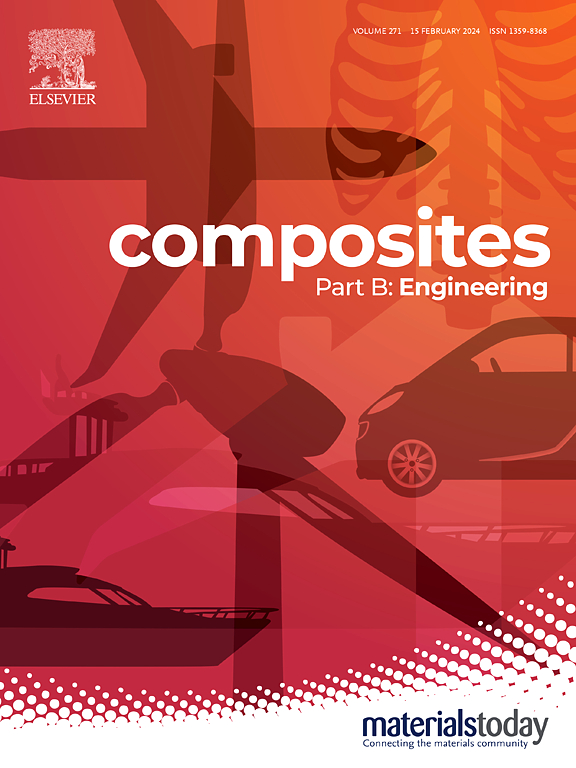Anisotropic topology optimization and 3D printing for composite structures with tailored continuous carbon fiber paths
IF 12.7
1区 材料科学
Q1 ENGINEERING, MULTIDISCIPLINARY
引用次数: 0
Abstract
This paper presents an integration of level set-based anisotropic topology optimization and 3D printing for designing continuous carbon fiber (CCF)-reinforced polymer composite structures. During the optimization process, geometric boundaries of the composite structure are updated by solving a reaction–diffusion equation. Based on these boundaries, the fast marching algorithm is employed to generate tailored CCF paths across the structural domain. This approach ensures consistency of the fiber path layout in the numerical topology optimization and the corresponding 3D-printed model. To validate performance, the 3D-printed composite structure using tailored CCF paths is compared with structures using fixed fiber paths orientations of 0°, 30°, 45°, and 60°, respectively. The numerical findings closely align with the experimental results for all study cases. Furthermore, the topology-optimized structure with tailored CCF paths exhibits superior performance.

具有定制连续碳纤维路径的复合材料结构的各向异性拓扑优化和3D打印
将基于水平集的各向异性拓扑优化与3D打印相结合,设计连续碳纤维增强聚合物复合材料结构。在优化过程中,通过求解反应扩散方程更新复合材料结构的几何边界。基于这些边界,采用快速行进算法生成跨结构域的定制CCF路径。该方法保证了数值拓扑优化中的光纤路径布局与相应的3d打印模型的一致性。为了验证性能,将使用定制CCF路径的3d打印复合材料结构与使用固定光纤路径方向分别为0°,30°,45°和60°的结构进行了比较。数值结果与实验结果吻合较好。此外,具有定制CCF路径的拓扑优化结构表现出优异的性能。
本文章由计算机程序翻译,如有差异,请以英文原文为准。
求助全文
约1分钟内获得全文
求助全文
来源期刊

Composites Part B: Engineering
工程技术-材料科学:复合
CiteScore
24.40
自引率
11.50%
发文量
784
审稿时长
21 days
期刊介绍:
Composites Part B: Engineering is a journal that publishes impactful research of high quality on composite materials. This research is supported by fundamental mechanics and materials science and engineering approaches. The targeted research can cover a wide range of length scales, ranging from nano to micro and meso, and even to the full product and structure level. The journal specifically focuses on engineering applications that involve high performance composites. These applications can range from low volume and high cost to high volume and low cost composite development.
The main goal of the journal is to provide a platform for the prompt publication of original and high quality research. The emphasis is on design, development, modeling, validation, and manufacturing of engineering details and concepts. The journal welcomes both basic research papers and proposals for review articles. Authors are encouraged to address challenges across various application areas. These areas include, but are not limited to, aerospace, automotive, and other surface transportation. The journal also covers energy-related applications, with a focus on renewable energy. Other application areas include infrastructure, off-shore and maritime projects, health care technology, and recreational products.
 求助内容:
求助内容: 应助结果提醒方式:
应助结果提醒方式:


